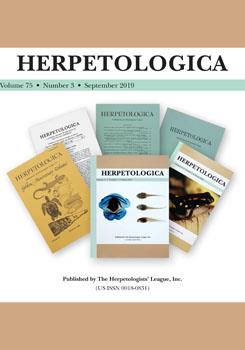The Neotropical dipsadid snake genus Atractus contains more species than any other genus of serpents. The type species for the genus, Three-lined Snakes (Atractus trilineatus), occurs in northern South America, as well as in the islands of Trinidad and Tobago. Little is known about the phylogenetic position of this fossorial snake. Here, we examine the genetic variation of this species. Phylogenetic analyses suggest that A. trilineatus is an early branch within Atractus, and is deeply divergent from all of the other 31 species within the genus included in our analyses. Populations of A. trilineatus from Trinidad and Tobago show a close genetic affinity with mainland populations from Guyana, and indicate recent vicariance following Late Pleistocene sea-level rises. Overwater dispersal events cannot be ruled out, however, especially for the colonization of Tobago. Our results add to the understanding of the complexity of the phylogeographic events in the eastern Caribbean with this ecologically constrained species.
How to translate text using browser tools
20 September 2019
Phylogenetic Position and Biogeography of Three-Lined Snakes (Atractus trilineatus: Squamata, Dipsadidae) in the Eastern Caribbean
John C. Murphy,
Daniele Salvi,
Alvin L. Braswell,
Michael J. Jowers
ACCESS THE FULL ARTICLE

Herpetologica
Vol. 75 • No. 3
September 2019
Vol. 75 • No. 3
September 2019
DNA
Fossorial
Guyana
phylogeny
Trinidad and Tobago
vicariance




